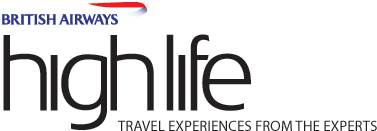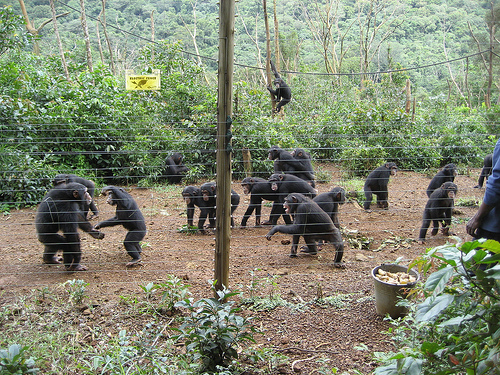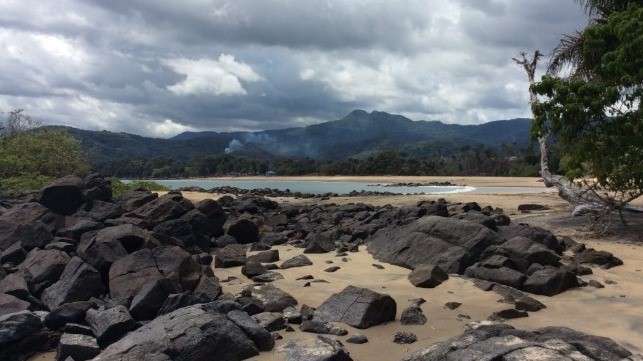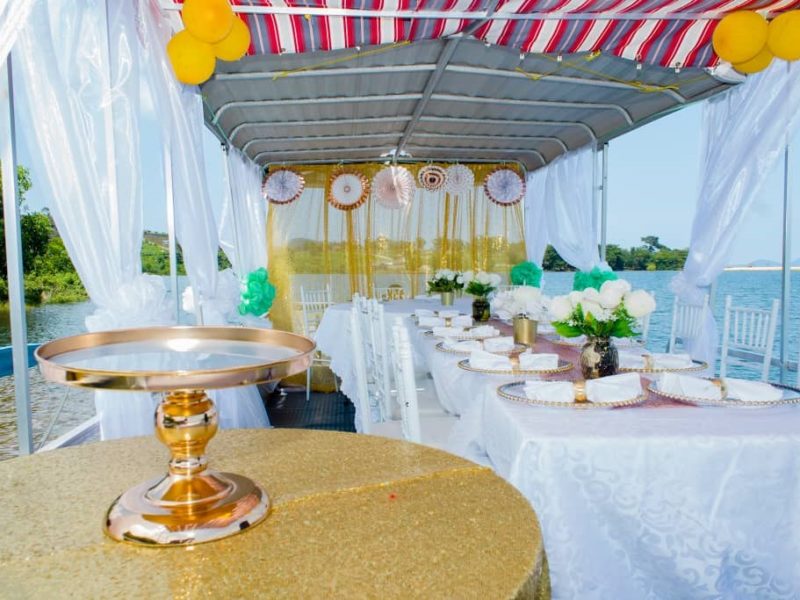British Airways’ “High Life” for Salone’s Higher Life
THE OSWALD HANCILES COLUMN
On Friday, 19th April, 2013, inside his office in State House, President Ernest Bai Koroma expressed his pleasure as two executives of British Media’s Country Section, Zornitza Natcheva (Project Manager) and Fraser Mitchell (Editorial Director) – who have been in the country for a whole month doing interviews – presented to our President the proof of what they aim to shortly publish on Sierra Leone in the ‘High Life’ magazine. (This would also include an audio/video version of 30 minutes interviews with key public sector/private sector leaders in Sierra Leone). The special edition on Sierra Leone in British Airways inflight magazine, High Life, would be put on the seat of all the passengers – which is a potential audience of 3.5 million passengers; passengers who travel to all the inhabited continents on earth (the only other airlines that travel like that are Delta Air Lines, Emirates, Korean Air, Qantas, Qatar Airways, Singapore Airlines, South African Airways, and United Airlines); landing in 300 cities in the world (nearly all the richest and most cosmopolitan cities). The European readership of High Life is 716,000. U.K. readership is 284. Socially and economically, the readership of High Life are high flyers – 31% earn more than 52,800 British pounds a year; most are at that comfortable age of being seasoned and well-positioned professionals – 42 years. 33% own their homes outright. High Life magazine has top of the notch journalists. Kerry Smith, one of their editors won the BSME New Editor of the Year, 2007; and Claire Wrathall, APA Journalist of the Year, 2007.
“We have discovered your beautiful peninsular…”
The Country Section executives of High Life magazine told the President that they have “discovered the beautiful peninsular” of Freetown; and, in their magazine, aim to showcase our country’s strides in significant GDP growth, recent peaceful elections, and what British companies like London Mining and Cryuff Gold are doing impactively in Sierra Leone. The publication aims to help strengthen U.K.-Sierra Leone ties, and attract the attention of more tourists and investors into Sierra Leone. Sierra Leone desperately needs such positive positioning in the global perception radar. Mention ‘Sierra Leone’ today in the ears of most people in the affluent West and what pops into their mind would be our 1990s nasty rebel war: ‘Blood Diamonds’, and hapless citizenry amputated for political profit. The amazing developmental strides of our country, the relative political stability and peaceful elections over the past fifteen years, some of the best beaches in the world with effervescent people which our country is endowed with, have all been buried in global consciousness by the murk of the ‘blood and gore’ of the RUF’s war on the citizenry during the 1990s. This could be a reason why tiny The Gambia attracts some 110,000 tourists yearly – whereas the vastly superior tourist attractions of Sierra Leone can only lure 4,000 tourists yearly. High Life magazine could use Swit Salone’s newly opened The Place resort at the idyllic Tokeh Beach on its front page. What a wonderful advertisement it would be for a foreign-currency starved country like ours that certainly would not afford the hundreds of thousands of dollars to advertise in big media institutions like CNN – for just about one minute of advertisement time. Most airline passengers almost invariably take a glance at inflight magazines – being ‘trapped audiences’ during several hours of flight.
British Airways: worthy and glossy advertisement conduit
British Airways is the flag carrier airline of the United Kingdom, based in Waterside, nears its main hub at London Heathrow Airport. It is the largest airline in the UK – based on fleet size, international flights, and international destinations, and the second largest in the world, by passengers carried. British Airways was the airline partner of the London 2012 Olympic Games. British Airways for twenty three years had an account with Saatchi & Saatchi (one of the biggest, and most glamorous, advertisement/public relations companies in the world), which created many of their most famous advertisements for them. As of February 2007, British Airways’ advertisement agency is another giant in the industry, Bartle Bogle Hegarty. British Airways is keenly aware of competition in its industry, and is feisty in doing combat with the competition. It is a lesson for us in Sierra Leone – blighted as we are still by the past of our ‘rebel war’.
Marketing Sierra Leone as land of ‘unspoilt beauty’
Keen to shake off international perceptions of a country shattered by a legacy of a 10-year civil war, the National Tourist Board is promoting Sierra Leone internationally as the “unspoilt …. stable and peaceful country with friendly, hospitable people” ripe for investment and development. The Tourist Board’s head, Cecil J Williams, recently told a U.K.-based publishing house, Voices of Leaders: “Sierra Leone is very unique, we are promoting eco-tourism, cultural tourism, heritage and historic tourism and leisure tourism. Other countries promote mainly safaris and beaches and we have all these elements. Also we are not far from Europe – six hours: so, there’s no jet lag.” Cecil Williams, speaking recently at the International Tourism Trade Fair in Berlin, said: “We want to attract middle and upmarket tourism. The tourism board is a bridge for us to reach out to investors. Expanding our tourism sector will create employment, bring tax revenues for the government, generate foreign exchange and support the socio-development of our country. We know we are competing with other states and we know we are coming out of a difficult period, so we are making the country as attractive as possible for investors – offering tax holidays and duty free concessions. We are gradually moving up the ‘doing business’ index.” Cecil Williams has bragged about the two new hotels being built (refurbished, and re-constructed) in Sierra Leone, to be managed by two of the leading hotel chains in the world: Raddisson Blu and Hilton. Brimming with infectious optimism, Cecil Williams crowed that as the big hotels move into Sierra Leone, at least two cruise liners have also added Freetown to their itineraries. The process of ‘rebranding’ Sierra Leone is on. But, unfortunately, Sierra Leone is a tiny corner of the ‘Africa’. And, for most people in Europe and America, all countries in Africa are one and the same. So, branding Africa as a whole can help all countries in Africa.
Branding a country is hard enough, let alone a whole continent, says Julian Smallwood of Havas, a French advertising firm. If a country sells itself as business friendly, it needs to fulfil its promises. That makes branding a continent a lot harder. The swankiest advertising campaigns can be ruined by the antics of a dictator—Muammar Qaddafi, for example—or by the sudden outbreak of a new war or famine. ( The Economist: Rebranding Africa; Can “Africa” get a make-over? For us in Sierra Leone, we must be forcefully conscious that if we sell ourselves as a ‘land of unspoilt beauty’ and ‘peaceful people’ – we must not spoil this by sullying our beaches with the worst forms of filth, and our people being predators or beggarly on tourists who have come, and those who are to come.
President Koroma presents a once in a 200 years opportunity to us
If Africa’s boosters and detractors agree on one thing, it is that the continent’s image is poor. No matter how hard the boosters try to sell the wares of our vast and diverse continent, they find it hard to shake off clichés about “heart of darkness” or television images of the emaciated fly-blown child. That is why the football World Cup, held successfully in South Africa, was so important. It was a rare month of good press coverage for the continent. Now a group called the Africa Leadership Retreat is trying to ride this wave of goodwill by bringing Africa’s marketing brains together to promote a brighter image for the continent with a so-called “Africa 2.0 initiative”. Thinkers and media people in Sierra Leone have to learn to take maximum advantage of every positive news on the global media on one’s country.
On a well-decked shelf behind President Koroma’s desk in his office in State House are two telling photographs: one is that of the tall President Ernest Bai Koroma and the tall U.S.’ President Barrack Obama, when President Koroma was honoured in the White House a month ago by the most powerful man on earth. The other is that of our ‘traditional friend’: former British Prime Minister Tony Blair with President Koroma. Obama is genetically African. Obama is the first person of African blood to hold the office of U.S. president. Obama is the only U.S. President with a non-English name. Obama is the only President with a non-English wife – in Obama’s case, his wife’s genes could really be traced to the ‘grain coast’, where today is Liberia and Sierra Leone. This is a once in a 200 years opportunity. Obama has several times publicly shown the most respect to President Ernest Bai Koroma, showering him with accolades, among all the 52 leaders of Africa. This is a rare opportunity. We are going to take advantage of what one of the best presidents in the Africa – President Koroma – has wrought for Sierra Leone. When we promote our intangibles to morph them into higher standard of living tangibles, we would sail the wave of high life which magazines like High Life are all about.
Oswald Hanciles
Stay with Sierra Express Media, for your trusted place in news!
© 2013, https:. All rights reserved.






